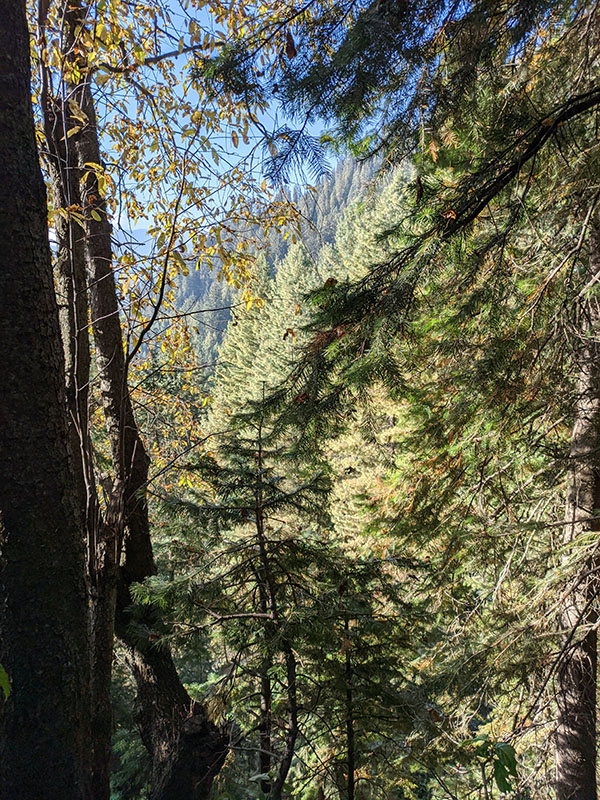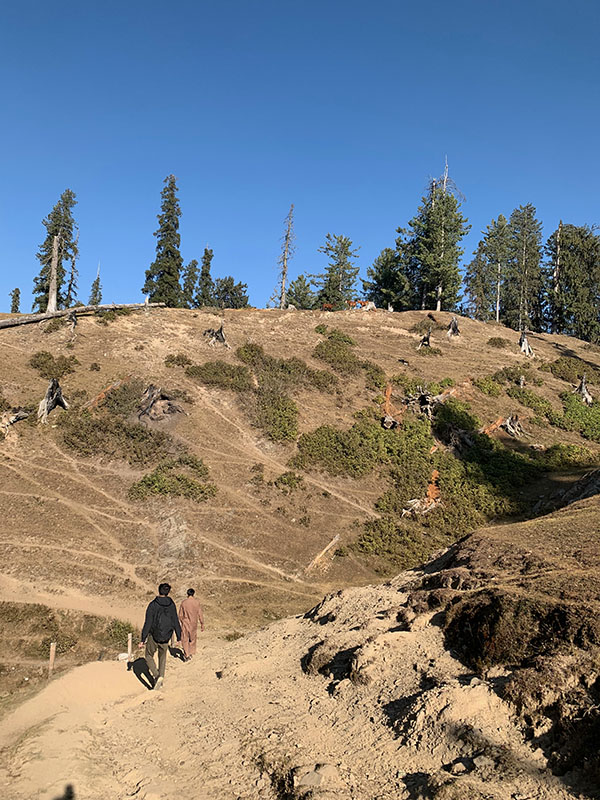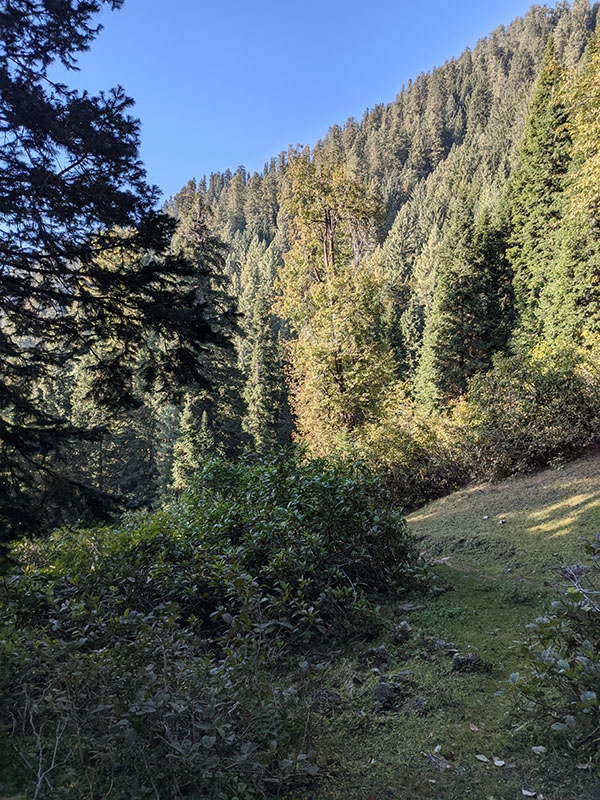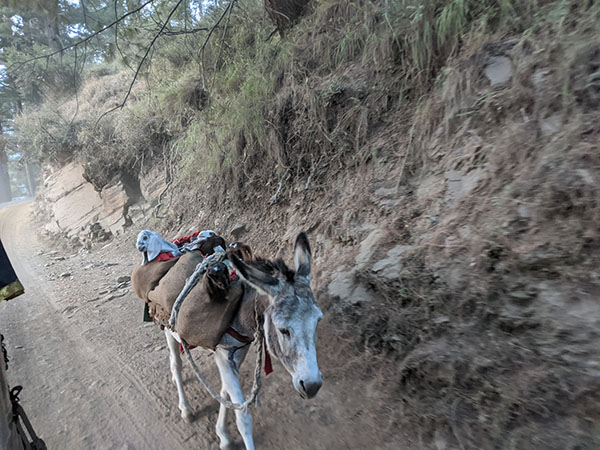
Written by: Mahnoor Fatima
Posted on: October 20, 2020 |  | 中文
| 中文
A Clearing in the Sharan Forest
In recent times, Pakistan has begun to be recognized as a burgeoning tourist destination, with amazing new sites opening to the public. While there are some places which have been established as must-see locations like Karimabad, Swat and Kumrat, there are still places that are not as well-known but are equally spectacular, in terms of the views one can see and experiences one can have there. One such place is Sharan Forest, located at about 2500 meters in the Upper Kaghan Valley, very close to Shogran and Siri Paye. Our group decided to spend the weekend there, ready to take a chance on this unknown location.
We began the journey from Islamabad at 4:00 in the morning. It takes about eight hours to travel to Sharan from Islamabad, using the newly-built Hazara Motorway and going through the small town of Balakot. Not only was the road easy to maneuver and well-constructed, but also it was quite easy to get phone signals on it. We passed a few quaint villages and there were plenty of small dhabas (roadside restaurants) along the way. We had breakfast at one of these, which was located next to a small waterfall. The weather instantly changed as the cool breeze traveled through the air, and the sun was hidden behind the hills.
After reaching the quaint village of Paras, it took another 45 minutes of an uphill drive on a jeep track to get to the resort. The path was located on the side of a hill, and was quite rough and uneven. Our hotel was located about 20 minutes away from the forest, and had a breathtaking view of the mountains, as well as the valley below. Other travel groups had also gathered at the same resort, giving the place a very vibrant and youthful atmosphere, filled with excitement and music.
For day one, we were to visit a local waterfall close to the Sharan camping site set up by the Pakistan Tourism Development Corporation (PTDC) and the local government. These camping pods were specifically made to encourage tourists to visit the forest in an effort to increase local tourism revenue. Unfortunately, while the setup looked quite clean and well organized, the camping site was booked for private use and we were not allowed to stay.
The part of the forest where we began our walk to the waterfall, was thick with autumnal trees and bright plants. The smell of pine cones wafted through the air, lifting everyone’s spirits and giving us a glimpse of what was to come. Sharan is still relatively untouched by tourism, therefore there’s very little litter and much of the thick trees are still intact. One felt transported into a far-off woodland filled with unspoiled beauty and infinite calm.
A short walk later, we descended to a patch of the river close to the waterfall. According to our guides, the best time to visit Sharan was during the May-July months when the river is at full flow, and the whole riverbed is covered in water. The now-rocky riverbed was surrounded by tall cliffs with gorgeous pine cone trees. After exploring the area, we sat together to eat fresh grapes, collectively in awe of the fact that our country still had so many magnificent places that are not known to the public. We returned to our hotel and watched the sun go down on the mountains and the valley, while the bright stars shone in the sky.
For our second day, we had planned a day-trek to Maanshi Top, one of the highest points in the forest, a little under 3000 meters. The total trek was for 5 hours, and there were two routes to get there: one deep in the forest which took a shorter time but was difficult, and another path close to the camping pods was easy but time consuming. We ascended via the shorter route, and descended via the longer route. Returning to the forest, we were dropped off next to a rough, rising pathway and we began our ascent. Just when we thought we had reached a high point, another higher path would appear before us.
Each new height was another vantage point of the surrounding mountains, and one could see all the way to Gilgit from Maanshi Top. The grass on the top was a warm yellow color, with small pathways on the side of the hill for agricultural purposes. Local farmers and shepherds were nonchalantly tending to their work while other visitors were sitting together, taking in the dizzying view. There was even a small kiosk for snacks, and locals with horses ready to take visitors for a ride.
Taking the route down, we were left awestruck by the charming scenery and uneven path as we returned. The path would take one through spectacular heights into pockets of the forest, still lush with greenery and vegetables. We passed by many shepherds with their herds of sheep and horses, going about their regular day.
Our guide explained that while there were basic amenities like food and healthcare, there has been a shortage of clean water of late. He also remarked that there had been considerable thinning of forests in the past few years as the place is unfortunately subjected to the illegal timber trade. According to Global Forest Watch, while Pakistan has a forest cover of 1.1%, its forest cover has decreased by 0.9% from 2001-2019. The primary cause of this loss has been deforestation, mostly in the Khyber Pakhtunkhwa province.
We left the forest for the last time, and celebrated this wonderful experience with a barbeque at the hotel. Before returning to Islamabad the next day, we decided on a brief detour through Balakot, stopping at one of the dhabas on the bank of the Kunhar River. With our toes dipped in the cool, rushing river, we had a pleasant cup of tea and took in one last lingering look at the valley which we had visited.
Needless to say, we were all amazed at the unique beauty that Sharan had to offer, even during the off-season. The efforts to publicize the raw beauty of the place is commendable, and one can hope that more people would be encouraged to visit. However, those who do choose to visit must be respectful of their natural surroundings, and desist from littering, which has become a hallmark of Pakistani tourism. Similarly, the provincial government must implement policies which prevent the deforestation of places like Sharan and curb the illegal timber trade in the Northern Areas, so as to preserve this beautiful location in all of its natural beauty.




You may also like: